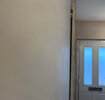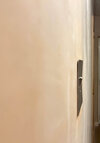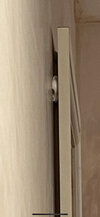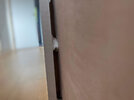Afternoon all,
I've recently had a bunch of new frames, doors hung and new architraves in my house. For the most part, the architraves fit snugly with only 2-3mm gaps, which I reckon a quick bit of decorator's caulk will sort. However, a couple of them have disconcerting 10mm+ gaps. One of these is on a new frame and on a freshly boarded wall, which I believe should have made for an easier fit.
I'm leaning towards calling the chippies back to rectify these larger gaps, as they seem too significant to be managed with caulking alone. I also might get them to sort a poor cut on one of the architraves.
I've put some images below, be good to get people's thoughts if I'm being too fussy.
I've recently had a bunch of new frames, doors hung and new architraves in my house. For the most part, the architraves fit snugly with only 2-3mm gaps, which I reckon a quick bit of decorator's caulk will sort. However, a couple of them have disconcerting 10mm+ gaps. One of these is on a new frame and on a freshly boarded wall, which I believe should have made for an easier fit.
I'm leaning towards calling the chippies back to rectify these larger gaps, as they seem too significant to be managed with caulking alone. I also might get them to sort a poor cut on one of the architraves.
I've put some images below, be good to get people's thoughts if I'm being too fussy.












